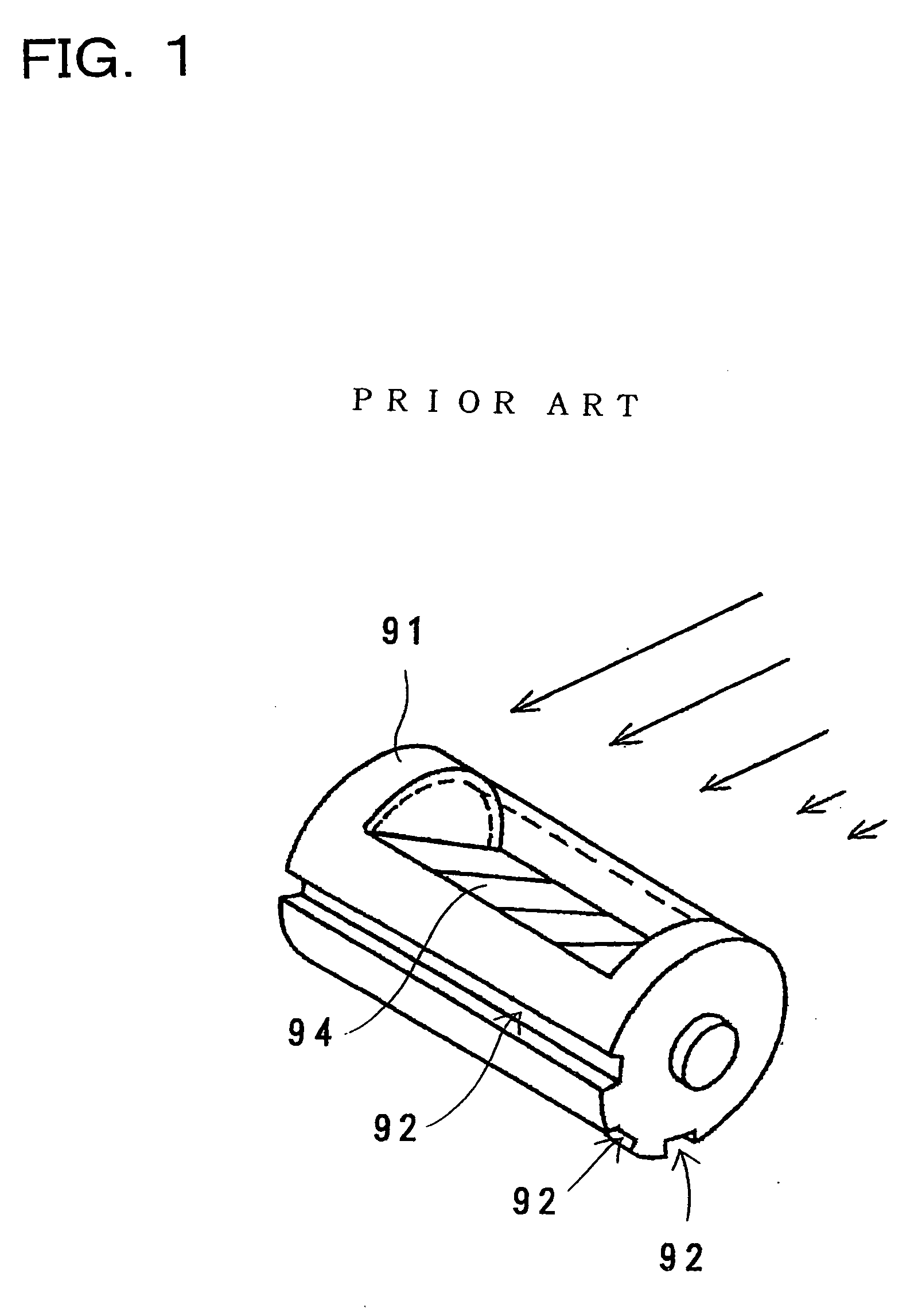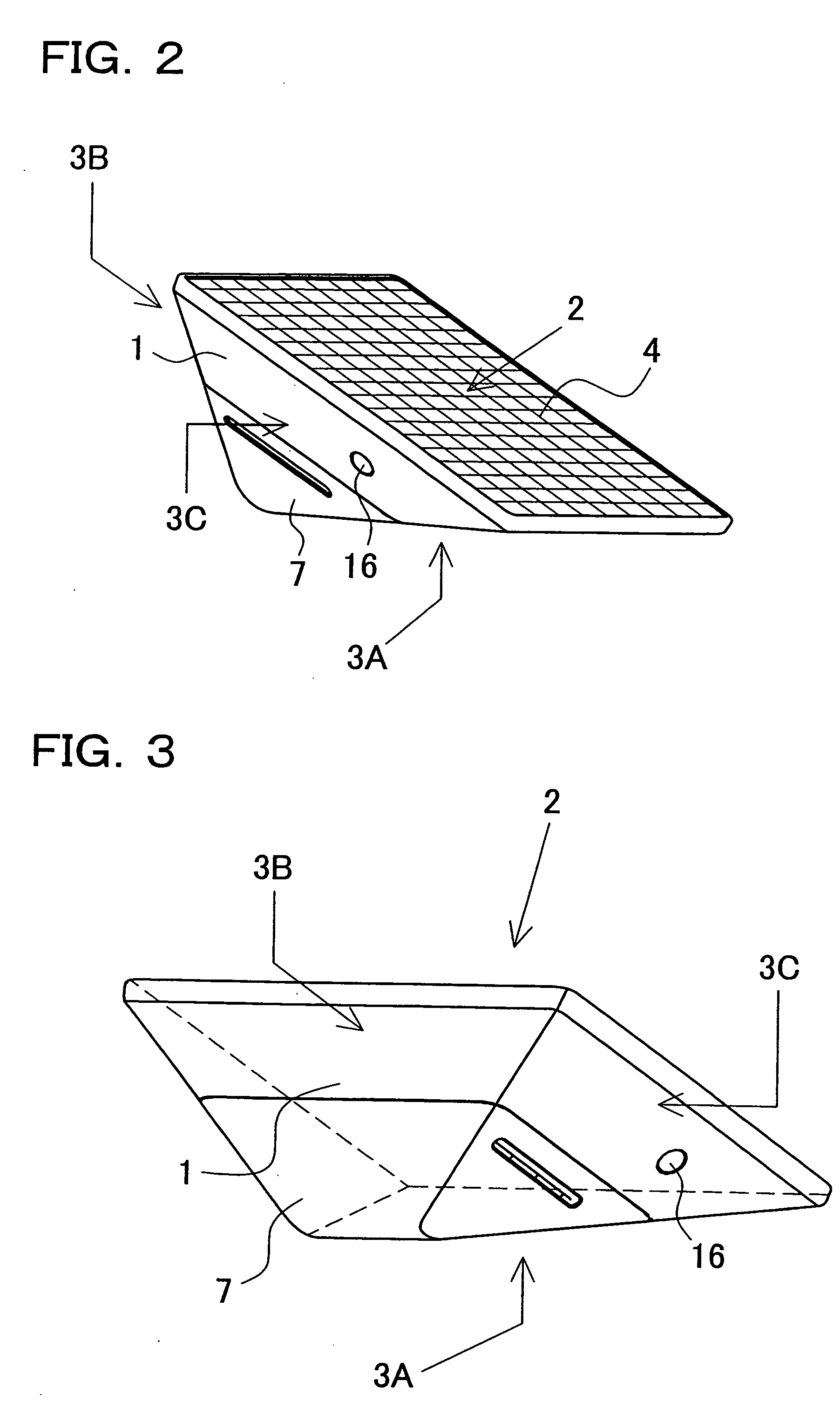Solar charger
a solar charger and charger body technology, applied in the field of solar chargers, can solve the problems of inability to efficiently charge rechargeable batteries, inability to stably hold a set angle of inclination, and narrow groove pitch, so as to avoid wasted energy
- Summary
- Abstract
- Description
- Claims
- Application Information
AI Technical Summary
Benefits of technology
Problems solved by technology
Method used
Image
Examples
Embodiment Construction
)
[0043]The solar charger (or solar re-charger) shown in FIGS. 2-10 is provided with a case 1 having a battery compartment 6 to hold rechargeable batteries 5 in a removable fashion, and solar cells 4 fixed to the case 1 to supply charging power to the rechargeable batteries 5.
[0044]The case 1 is formed in a shape that has a bottom surface 2 and at least two tapered surfaces 3 having different slope angles (α) with respect to the bottom surface 2. The case 1 shown in FIGS. 2-7 has an overall pyramid-shape. The case 1 shown in FIGS. 2-7 is formed in a pyramid-shape having a polygonal bottom surface 2 with a plurality of tapered surfaces 3 at its perimeter. However, in the present application, a pyramid-shape is not necessarily limited to a shape having a vertex region that forms a vertex point opposite the bottom surface. For example, the case 1 shown in FIGS. 2-7 is not a perfect pyramid with four sides and a base, but rather the vertex region has a ridge that forms a rooftop-type pse...
PUM
| Property | Measurement | Unit |
|---|---|---|
| slope angle | aaaaa | aaaaa |
| slope angle | aaaaa | aaaaa |
| slope angle | aaaaa | aaaaa |
Abstract
Description
Claims
Application Information
 Login to View More
Login to View More - R&D
- Intellectual Property
- Life Sciences
- Materials
- Tech Scout
- Unparalleled Data Quality
- Higher Quality Content
- 60% Fewer Hallucinations
Browse by: Latest US Patents, China's latest patents, Technical Efficacy Thesaurus, Application Domain, Technology Topic, Popular Technical Reports.
© 2025 PatSnap. All rights reserved.Legal|Privacy policy|Modern Slavery Act Transparency Statement|Sitemap|About US| Contact US: help@patsnap.com



